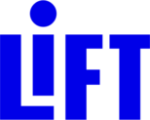Last month, three members of the National Program Team – Sophie, Stacy, and Maria – traveled to California to get schooled on something called “improvement science”, which is an approach (and growing movement!) to get better at getting better. We’ve collected their findings to share with you in a series of blog entries.
“Continuous Learning at the Carnegie Foundation Summit,” Part III
A favorite quote and lessons for LIFT: If you can’t define what you’re doing as a process, you don’t know what you’re doing (W. Edwards Deming). This conference brought home the importance of seeing your system, mapping it and then improving it. One tool to use is a process map. A process map is a tool that not only crystallizes what is happening (or should be happening), but also serves as a foundation for what information to collect. Once you have information against a defined process, it’s possible to identify opportunities to increase efficiency and effectiveness. There are many possible uses at LIFT! For example: How to recruit Advocates? When to elevate Member behavior? and the list goes on. A sample process diagram is shown below.
Why does any of this matter for LIFT? Because we cannot be the organization we want to be unless we get more rigorous about quality, far more intentional about learning, and most importantly, even more consistent about delivering the impact we intend. In LIFT terms, we want more than the occasional Member success story – we want to know that our work reliably produces strong outcomes throughout our Member population. This requires us to move beyond knowing what can work to understanding what does work to achieve results across the network. A systematic approach to continuous learning is just one tool we can leverage to help us get there, so we can truly, consistently make a difference in the lives of the people we serve. In the words of Summit keynote speaker Don Berwick: “The problem is that managing quality is not just an intellectual endeavor; it is a pragmatic one. The point is not just to know what makes things better or worse; it is to make things actually better.”
We couldn’t agree more.
Want to learn more about improvement science? Check out the Carnegie Foundation’s website for more info, read part one of this series, and part two.

